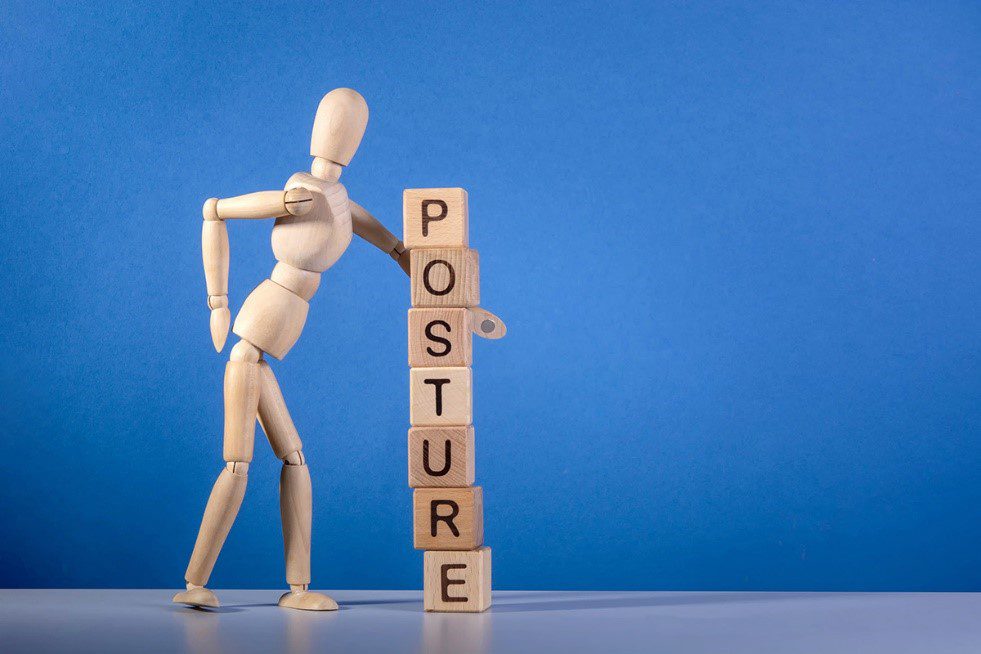September 17th, 2021
“Design is not just what it looks like and feels like. Design is how it works.”
– Steve Jobs, Co-Founder and CEO of Apple
Your posture expresses your body’s relationship with gravity while standing, sitting, or lying down. Good posture places minimal strain on your supporting muscles and ligaments during your lifetime. Body mechanics refers to how you use your body to complete various tasks during daily life activities. Whether lifting, bending, or stretching, you should think of how you are using your back to avoid causing an injury.
Your spine has thirty-three vertically stacked bones (vertebrae) cushioned by disks. Add spinal fluid, and you should have ample and functional protection for the spinal cord and nerves. Your backbone, or spine, starts at the base of your skull, runs through the midline of your body, and ends with your tailbone. However, it is the way you carry yourself, your posture, that most significantly protects your back—more specifically, your spine—from injury.
Good posture involves training your body to stand, walk, sit, and lie in positions where the least strain is placed on supporting muscles and ligaments during movement or weight-bearing activities. A typical spinal column is designed to curve both forward and backward naturally. Your spine has natural curves that form an S-shape or a slight inward curve, and the thoracic (lower) spine has a kyphotic or gentle outward curve. The spine’s curves work like a coiled spring to absorb shock, maintain balance, and facilitate the full range of motion throughout the spinal column.
Correct posture is a simple but very important way to keep the many intricate structures in the back and spine healthy. It is much more than cosmetic—good posture and back support are critical to reducing the incidence and levels of back pain and neck pain. Back support is especially important for patients who spend many hours sitting in an office chair or standing throughout the day.
Strength training includes the use of free weights, weight machines, resistance bands, or water exercises to strengthen the muscles and bones in your arms and upper spine. It can also work directly on your bones to slow mineral loss.
Flexibility Should Not Require a Stretch of the Imagination
Disuse causes weakness and tightness, which causes more disuse, and so on. It’s a vicious cycle. Flexibility, or the lack thereof, is the most important factor affecting our quality of life as we age. Sure, it’s important to be able to climb the stairs and not get winded and to have the strength to perform daily activities. However, being unable to move your limbs through their full range of motion is extremely limiting. The great news is that your flexibility is not age-related.
Poor muscle tone is inevitable if the number and kind of exercises done are insufficient. A person with poor muscle tone is much more vulnerable to mechanical strain than one with a normal or muscular build. When a person is ill and completely inactive in bed, he loses muscle strength at the rate of 7 percent a day.
To Keep in Mind
Do not twist the body while turning. Instead, change the position of your feet and turn. Just bending down and turning to one side is the worst movement you can make.
Do regular back-extension exercises and abdominal exercises to keep up the tone of the muscles.
Stretches are best performed after your muscles are warmed up—at the end of your exercise session. They should be done gently and slowly, without bouncing. Relax and breathe deeply while you stretch. Avoid stretches that flex your spine or cause you to bend at the waist, as these positions may put excessive stress on the bones in your spine, placing you at greater risk of a compression fracture.

